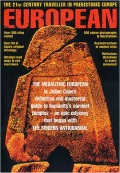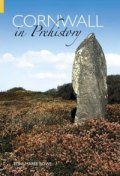<< Our Photo Pages >> Trevelgue Head - Promontory Fort / Cliff Castle in England in Cornwall
Submitted by AngieLake on Thursday, 13 April 2017 Page Views: 31538
Iron Age and Later PrehistorySite Name: Trevelgue HeadCountry: England County: Cornwall Type: Promontory Fort / Cliff Castle
Nearest Town: Newquay Nearest Village: Porth
Map Ref: SW82506310 Landranger Map Number: 202
Latitude: 50.427374N Longitude: 5.063636W
Condition:
| 5 | Perfect |
| 4 | Almost Perfect |
| 3 | Reasonable but with some damage |
| 2 | Ruined but still recognisable as an ancient site |
| 1 | Pretty much destroyed, possibly visible as crop marks |
| 0 | No data. |
| -1 | Completely destroyed |
| 5 | Superb |
| 4 | Good |
| 3 | Ordinary |
| 2 | Not Good |
| 1 | Awful |
| 0 | No data. |
| 5 | Can be driven to, probably with disabled access |
| 4 | Short walk on a footpath |
| 3 | Requiring a bit more of a walk |
| 2 | A long walk |
| 1 | In the middle of nowhere, a nightmare to find |
| 0 | No data. |
| 5 | co-ordinates taken by GPS or official recorded co-ordinates |
| 4 | co-ordinates scaled from a detailed map |
| 3 | co-ordinates scaled from a bad map |
| 2 | co-ordinates of the nearest village |
| 1 | co-ordinates of the nearest town |
| 0 | no data |
Internal Links:
External Links:
I have visited· I would like to visit
optimistic20814 would like to visit
lucasn visited on 20th Oct 2018 - their rating: Cond: 3 Amb: 4 Access: 4
ajmp3003 visited on 1st Jan 2012 - their rating: Cond: 3 Amb: 4 Access: 5
AngieLake have visited here
Average ratings for this site from all visit loggers: Condition: 3 Ambience: 4 Access: 4.5

Nicholas Thomas, in his useful book, 'Guide to Prehistoric England', (Batsford/Book Club Associates, 1976) tells us more:
"This site must have been of special importance in prehistoric times because it protected a harbour probably used by those trading the local tin. Indeed evidence has been found here of bronze-smelting during the Bronze Age. The earthworks that are visible, however, belong to the Iron Age, with habitation lasting through the Roman period.
This site is divided today by a narrow cleft through which runs the sea. On the landward side 3 pairs of banks and ditches guard the approach, a fourth earthwork lying further to the E and cutting off nearly 200 yds of the Head. A second group of 3 banks and ditches (the cleft forming the island constituting the third ditch) defends the E end of this island. These rock-cut ditches and banks are all massive, the outermost being 12 ft deep and its bank 6-8 ft high. They enclose an area of nearly 6 acres.
Within, a series of huts has been excavated. They belong to the Iron Age, Roman and Dark Age periods. The foundations of some have been cut back into the natural rock and walls were of good quality drystone. Finds included Iron Age bronze horse harness and a small bronze foundry on the S side of the castle. Date of early occupation, c. 3rd century BC. Habitation continued beyond Roman period.
There are 2 round barrows close to the outermost rampart (about SW/825630). One has a diam. of 70 ft and a ht. of 12 ft.; the other is nearly 50 ft across and 10 ft high. Nothing is known of their contents. Date, c. 1,700-1,400 BC."
The Newquay Town Council sign at the beginning of the path through the site says:
"PORTH ISLAND
During the Iron-Age (6th (sic)-1st centuries BC) the headland, the settlement of an important local chieftain, was defended by six strong ramparts. Excavation has revealed the foundations of large round houses (no longer visible) and evidence for the smelting of iron ore, which is found on the headland. Two Bronze Age barrows or burial mounds (2000-1500 BC) can also be seen on the headland, and two more stand prominently on the cliff at Whipsiderry, a little to the east."
It is a beautiful site to visit, maybe to combine with a laze on sandy Porth beach, but be careful climbing the mound on the highest ground at the end of the headland, as there is a nasty drop over the cliffs on the seaward side! (I thought this was a barrow, but may be mistaken?) Angie Lake
Note: Beautiful new series of photos from Bladup
You may be viewing yesterday's version of this page. To see the most up to date information please register for a free account.
























These are just the first 25 photos of Trevelgue Head. If you log in with a free user account you will be able to see our entire collection.
Do not use the above information on other web sites or publications without permission of the contributor.
Click here to see more info for this site
Nearby sites
Key: Red: member's photo, Blue: 3rd party photo, Yellow: other image, Green: no photo - please go there and take one, Grey: site destroyed
Download sites to:
KML (Google Earth)
GPX (GPS waypoints)
CSV (Garmin/Navman)
CSV (Excel)
To unlock full downloads you need to sign up as a Contributory Member. Otherwise downloads are limited to 50 sites.
Turn off the page maps and other distractions
Nearby sites listing. In the following links * = Image available
1m E 90° Trevelgue* Barrow Cemetery (SW825631)
1.0km NE 52° Zachry's Barrows* Barrow Cemetery (SW83356371)
1.1km SSW 211° Barrowfields* Barrow Cemetery (SW819622)
2.5km ESE 116° Rialton Manor* Holy Well or Sacred Spring (SW847619)
3.1km SSW 207° Treringey Round* Ancient Village or Settlement (SW810604)
3.4km ESE 102° St. Pedyr's Well* Holy Well or Sacred Spring (SW8579462245)
3.8km NNE 24° Griffin's point fort* Promontory Fort / Cliff Castle (SW842665)
4.3km SW 234° St Ambrusca's Well* Holy Well or Sacred Spring (SW789607)
4.5km SW 231° Crantock* Holy Well or Sacred Spring (SW789604)
4.6km WSW 249° East Pentire Barrow* Round Barrow(s) (SW781616)
4.9km NNE 30° Mawgan Porth Settlement Ancient Village or Settlement (SW85126727)
5.1km ENE 62° St James's Well, Ball* Holy Well or Sacred Spring (SW8709865269)
5.2km ESE 119° Our Lady of Nance* Holy Well or Sacred Spring (SW870604)
5.5km ENE 57° Mawgan Cross* Ancient Cross (SW87256594)
5.5km ENE 57° St Mawgan's Holy Well* Holy Well or Sacred Spring (SW87276592)
5.8km SW 228° Cubert Common Tumulus* Round Barrow(s) (SW78055943)
6.2km NNE 19° Carnewas Longstone* Standing Stone (Menhir) (SW84756885)
6.2km SE 142° Dairyland Farm World* Modern Stone Circle etc (SW861580)
6.4km SSW 205° Cubert Round* Ancient Village or Settlement (SW796574)
6.4km WSW 247° Kelsey Head* Promontory Fort / Cliff Castle (SW765608)
6.6km SW 214° Cubert.* Early Christian Sculptured Stone (SW786578)
6.6km WSW 240° Holywell Bay* Holy Well or Sacred Spring (SW76636002)
6.6km SW 228° Trevornick Farm* Holy Well or Sacred Spring (SW7733958890)
6.8km NE 41° St Eval Airport Stone* Standing Stone (Menhir) (SW87146803)
7.0km NNE 18° Redcliff Castle* Promontory Fort / Cliff Castle (SW84926965)
View more nearby sites and additional images






 We would like to know more about this location. Please feel free to add a brief description and any relevant information in your own language.
We would like to know more about this location. Please feel free to add a brief description and any relevant information in your own language. Wir möchten mehr über diese Stätte erfahren. Bitte zögern Sie nicht, eine kurze Beschreibung und relevante Informationen in Deutsch hinzuzufügen.
Wir möchten mehr über diese Stätte erfahren. Bitte zögern Sie nicht, eine kurze Beschreibung und relevante Informationen in Deutsch hinzuzufügen. Nous aimerions en savoir encore un peu sur les lieux. S'il vous plaît n'hesitez pas à ajouter une courte description et tous les renseignements pertinents dans votre propre langue.
Nous aimerions en savoir encore un peu sur les lieux. S'il vous plaît n'hesitez pas à ajouter une courte description et tous les renseignements pertinents dans votre propre langue. Quisieramos informarnos un poco más de las lugares. No dude en añadir una breve descripción y otros datos relevantes en su propio idioma.
Quisieramos informarnos un poco más de las lugares. No dude en añadir una breve descripción y otros datos relevantes en su propio idioma.